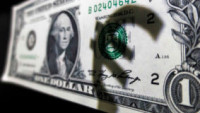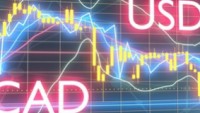 Yesterday was another mixed bag for European markets, with the DAX closing lower for the 5th day in a row, while still closing well off the lows of the day in another choppy session. The FTSE100, on the other hand, managed to break a 3-day losing streak, helped by a slightly weaker pound.
Yesterday was another mixed bag for European markets, with the DAX closing lower for the 5th day in a row, while still closing well off the lows of the day in another choppy session. The FTSE100, on the other hand, managed to break a 3-day losing streak, helped by a slightly weaker pound.
US markets had a slightly more negative tone to them with the Nasdaq 100 closing lower for the 4th day in a row, with weakness in the Apple share price acting as the main lag on the index, while weekly jobless claims fell to their lowest levels since February.
The overall mood amongst investors does appear to be becoming gloomier, however despite recent price moves we’re still within the price ranges we’ve been in over the past 6 months. With some key central bank meetings looming in the next 2 weeks we might find the catalyst that breaks us out of these choppy ranges.
It’s been another strong week for the US dollar, set for an eight successive weekly gain, and its highest level in over 6 months as it recovers back to the levels it was just prior to the March regional banking crisis.
One of the main reasons why the US dollar is doing so well is largely down to the performance of the US economy relative to its peers. Recent economic data has shown that the economy remains resilient, so much so that there is a feeling that the Federal Reserve might be able to get away with one more rate hike before year end, probably in November.
The same cannot be said anywhere else with weakness in China, Europe and the UK holding back any prospect of further rate hikes against a backdrop of a deteriorating economic outlook,
This change in sentiment has seen the pound and the euro slide back, with the euro slipping below 1.0700 for the first time since June, along with the pound which has slipped below 1.2500.
The economic data seen this week, especially from Germany and the rest of the euro area has been extremely disappointing, from some dreadful factory orders data for July, to a sharp downgrade to EU Q2 GDP from 0.3% to 0.1%, which meant that since Q3 of last year the euro area has barely grown at all.
It would take a brave central bank to hike rates further when economic activity is collapsing in one the biggest economies in Europe.
The weakness in the pound has been much more notable as traders pare bets on the likelihood of the Bank of England hiking rates by as much as expected over the coming weeks and months.
Judging by recent comments from the likes Governor Bailey earlier this week, as well as deputy governor Broadbent and chief economist Huw Pill at the end of August, there is a sense the market is being softened up for a rate pause later this month, with the narrative likely to be that rates are likely to stay at current levels until 2025 at the very least.
This in turn has seen gilt yields slide across the board, as future rate hike bets get priced out, and investors turn their attention to which central bank might have to cut rates first, with opinion split between the ECB, or the Bank of England.
On the data front it’s set to be fairly quiet day, with little way of data on the docket, as we look towards a modestly cautious, but mixed European open.
EUR/USD – slipped below the 1.0700 area yesterday, with the May lows at 1.0635 the next key support. Resistance comes in at the 1.0760/70 and the August lows.
GBP/USD – closing in on the 200-day SMA at the 1.2410 area. Below 1.2390 argues for a move towards the 1.2300 area. Only a move back above the 1.2630/40 area, stabilises and argues for a return to the highs last week at 1.2750/60.
EUR/GBP – squeezed back to the 0.8600 area breaking above the 50-day SMA in the process. The 100-day SMA and 0.8620/30 area is also a key resistance. Support lies back at the lows this week at 0.8520.
USD/JPY – had 3 attempts at the 147.80/90 area this week and failed. A break above 148.00 targets the 150.00 area. Only a move below last week’s low at 144.50 targets a move back towards 142.00.












